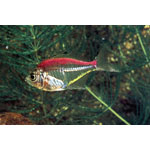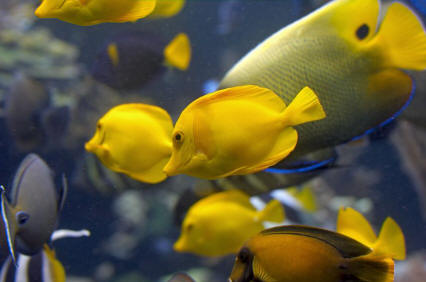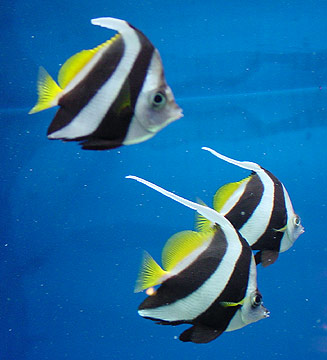Glass Fish

|
Scientific Name: Ghanda baculis Price: Upon Request Origin: South Asia: From Pakistan to Malaysia Family: Ambassidae NOT AVAILABLE NOW |
|
Other Names: Indian Glass Fish, Parambassis ranga, Ambassis ranga, Chanda ranga, Pseudambassis ranga, Indian glass perch, Siamese glassfish |
|
Technical Info
Temperature: 20 - 30 ℃
pH: 7 - 8
GH: 8 - 20
Max size: 8 cm
Min Tank size: 40 Ltr
Position in Aqua: No special swimming level
Description
The Glass Fish has a striking transparent body revealing its bones and internal organs; the male develops a dark edge to the dorsal fin. It can be kept in small aquariums. Decorate aquarium with free areas to swim in the middle and heavily planted areas around the sides. Use rocks to create caves and hiding places. Fish are easier to keep healthy if a small amount of salt is added to the water.
Food
Carnivore-will accept most live, frozen and dried foods.
Breeding
Not Hard. The Glass Fish should be kept in water with two teaspoons of salt per 12 litres for two to three months prior to breeding. To instigate breeding place the tank in a place where it can receive morning sunlight and do a partial water change with fresh water (no salt) while raising the temperature to 26-28°C. The eggs are laid on broad leaved plants. Though the Glass Fish is easy to breed, their offspring is quite hard to raise.
Compatible with
In freshwater conditions, it can be kept with barbs, livebearers, smaller rainbowfish, loaches and many other small tropicals. In the brackish aquarium, mollies, bumblebee gobies and chromides are all possibilities. The Glass fish is a shoaling species and will not do well if kept singly or in pairs. Aim for a group of at least 6. Males do become somewhat territorial when spawning but physical damage is rare.
Note
Males have blue edging to the dorsal and anal fins and are a slightly deeper yellow on the body than females. These differences are more apparent when the fish are breeding, as the colours become more intense. The swim bladder (which is clearly visible) has a pointed back edge in males.

